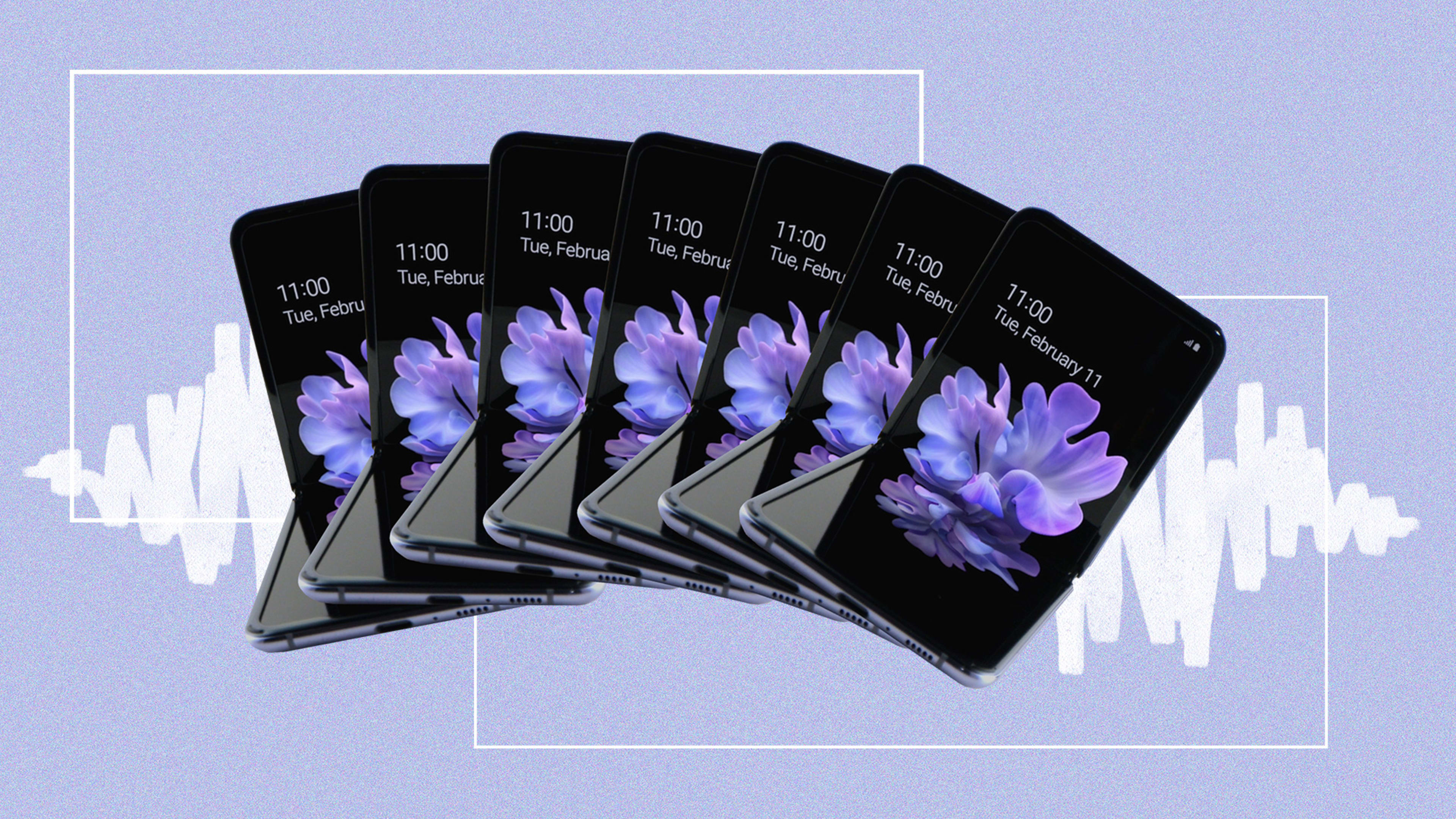When I attended Samsung’s “Unpacked” product launch in San Francisco on Tuesday morning, I was initially surprised by the fact that the first thing the company showed was the Galaxy Z Flip, its second foldable-screen smartphone after last year’s Galaxy Fold. The Flip felt like an ideal “just one more thing” product—a sexy cherry on top after the meat and potatoes of the new Galaxy S20 phones, if you’ll forgive me mixing my food metaphors.
As the event unfolded, though, the order made sense. The Galaxy S20 portion of the show was dense with tech and specs, from 5G connectivity to 120KHz screens to 108MP camera sensors and 10X zoom lenses. And the Galaxy Z Flip section? Samsung UK marketing honcho Rebecca Hirst, who presented the Flip, barely mentioned the technology behind the phone. The closest she came was discussing the folding glass that protects the screen from scratches and the fibers that defend the hinge against dirt and dust—important points to make after the Galaxy Fold’s rollout was hobbled by reliability issues.
Instead, Hirst unabashedly pitched the Flip as a bragworthy luxury item. She called it a “statement smartphone” and “a standout smartphone for people who want to stand out,” and promised prospective buyers that they’ll “always be attracting attention and turning heads.” She also teased a special edition of the phone resulting from a partnership between Samsung and Thom Browne, a designer whose other creations include $310 T-shirts and $2300 hiking boots.
https://www.youtube.com/watch?v=MIQdJkoTh48
The Galaxy Z Flip’s foldability makes it among the first examples of a new kind of smartphone, and Hirst did point out some use-case scenarios, ranging from hands-free selfies to no-tripod hyperlapse photography. But aside from its one radically new feature, this phone uses pretty typical componentry. It’s a 4G phone with only two rear cameras on the back, neither of which offer crazy megapixel counts or zoom ranges. At $1380, it’s only twenty bucks less than the Galaxy S20 Ultra, but the two phones cater to such radically different types of customers that I could see why Samsung chose to pitch the Flip before giving people a chance to wonder if it matched the technical advances of the S20 line.


Still, every gadget that isn’t a ho-hum commodity has at least some element of allowing its owners to show off. It’s just that it’s rare for any company to acknowledge that as unabashedly as Samsung did, and its directness was oddly refreshing.
Recognize your company's culture of innovation by applying to this year's Best Workplaces for Innovators Awards before the extended deadline, April 12.
